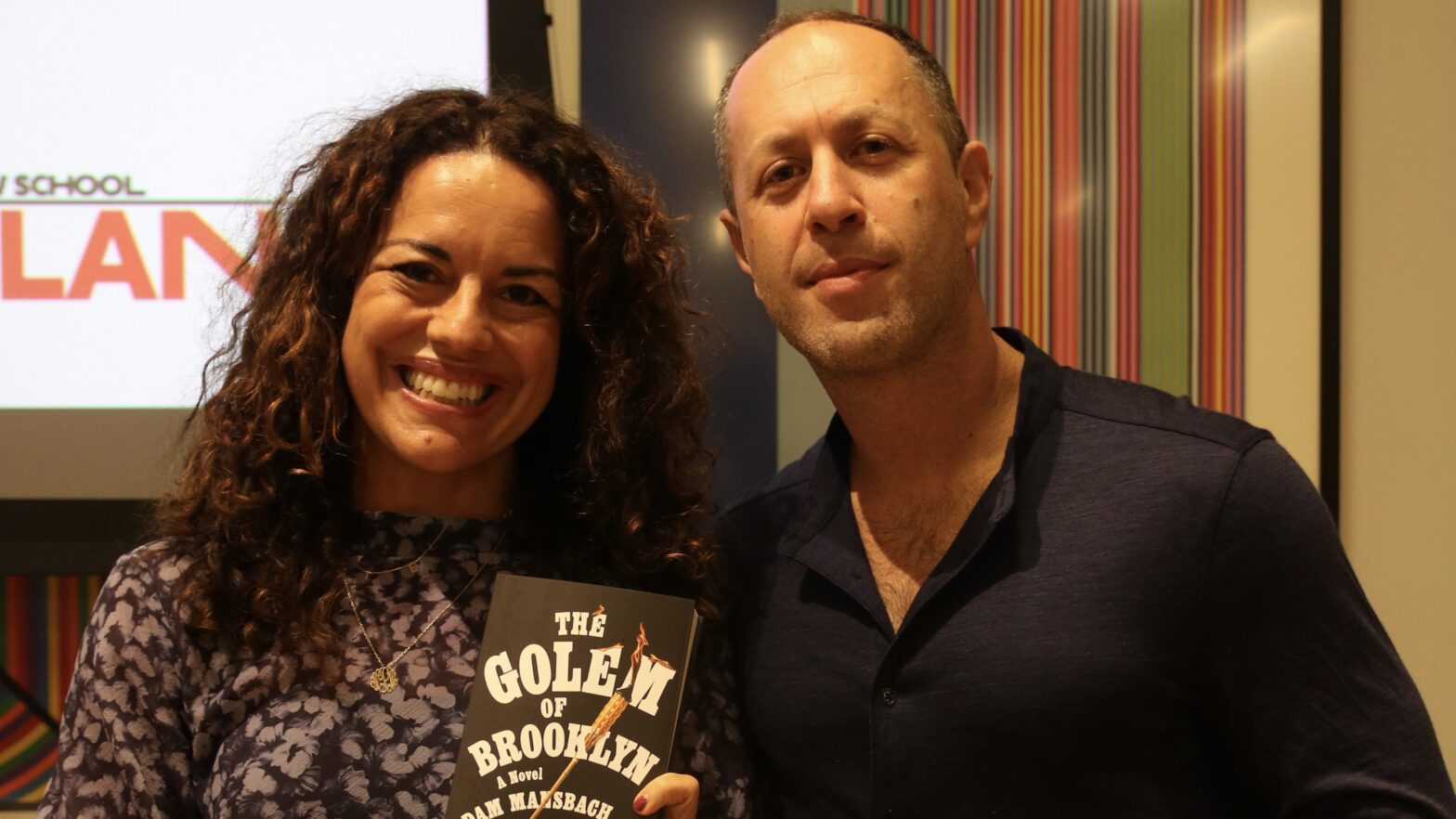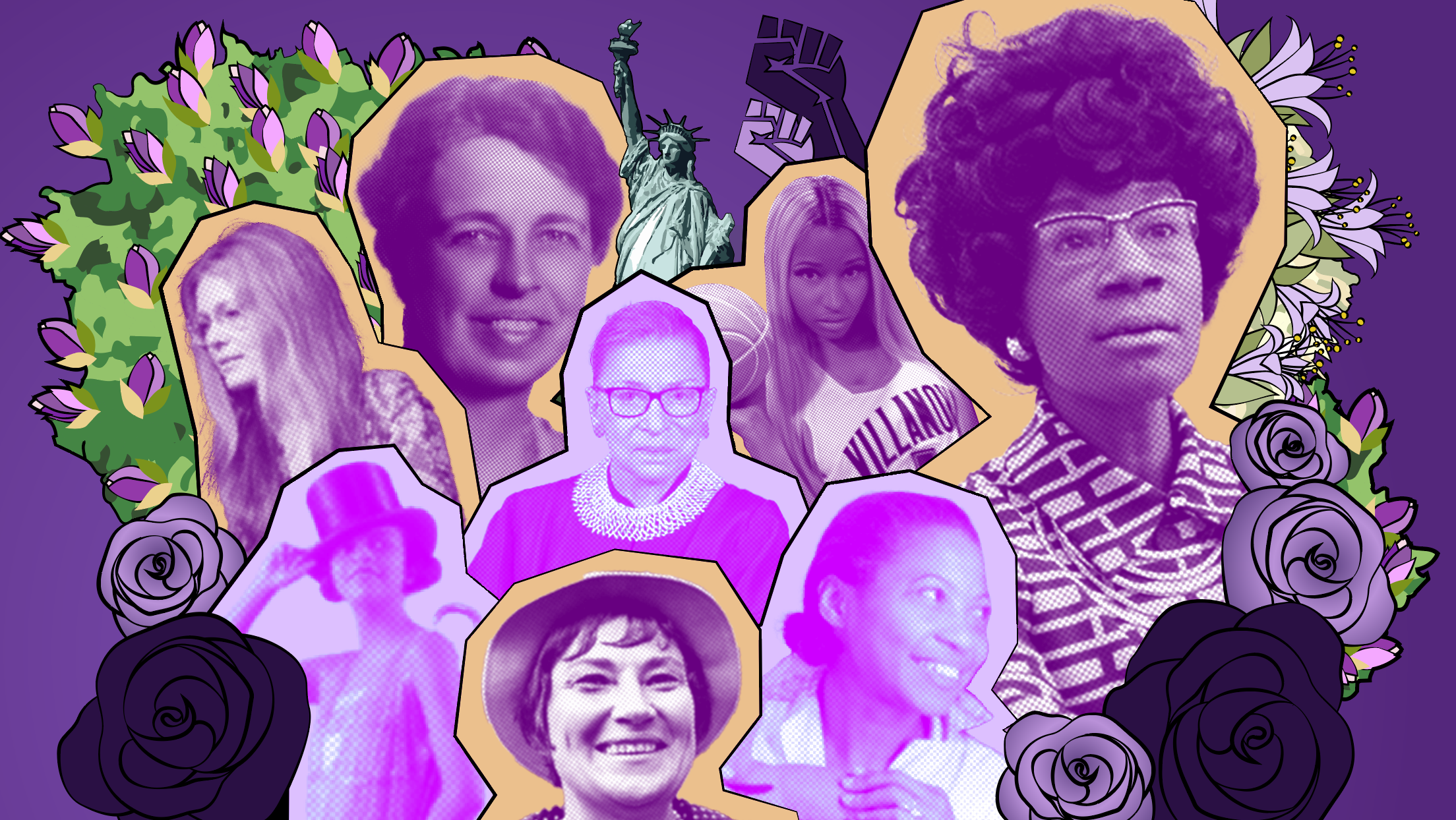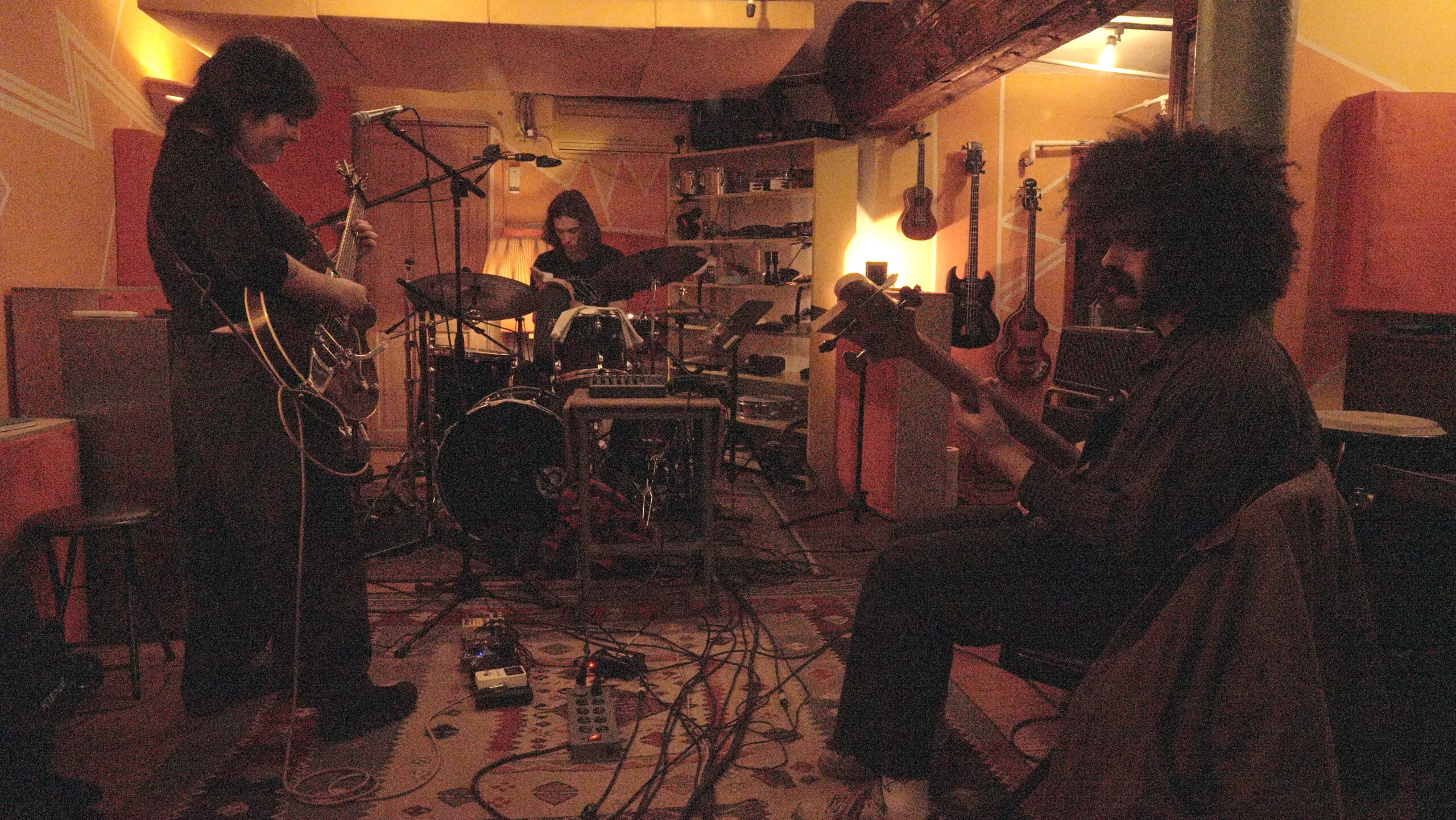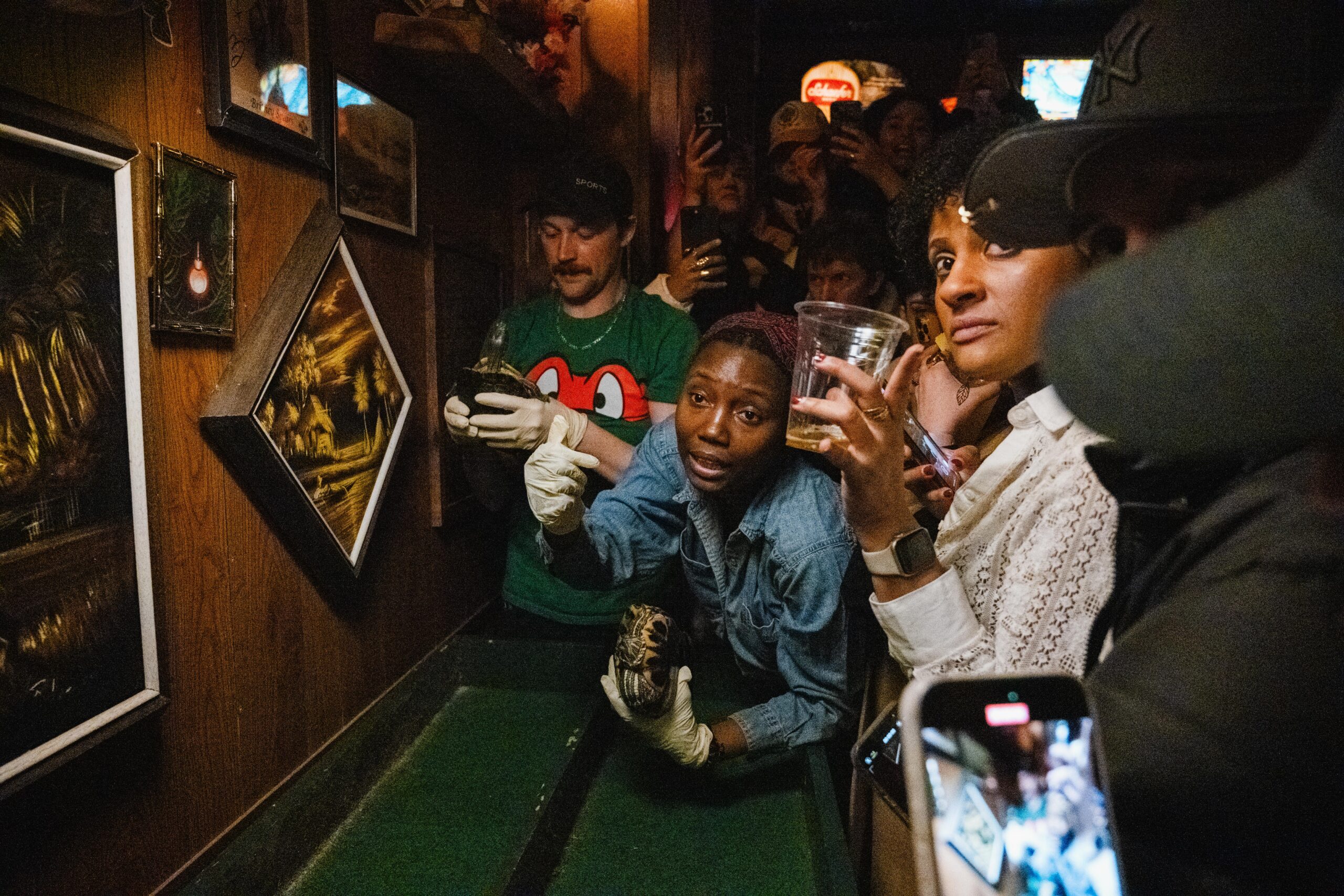Editor’s note: This interview was held on Oct. 4, before the Oct. 7 Hamas attacks on Israel and the now ongoing humanitarian crisis in Gaza and Israel. This war gives new context to the concept of the golem and reaffirms many themes of the book. The Free Press contacted Adam Mansbach for a follow-up interview but he declined.
In 16th century Prague, a folktale arose about the renowned Rabbi Loew creating an eight-foot-tall humanoid creature out of clay and bringing it to life to protect the Jewish people from deadly pogroms. The concept of this creature, called a golem, originates in the Talmud and has since starred in countless books, films, operas, and lore. Most recently, writer and humorist Adam Mansbach — New York Times bestselling author of “Go the F*** to Sleep” and screenwriter of the Netflix film “Barry” — has reanimated the creature in his new irreverent novel “The Golem of Brooklyn.”
In an interview with The New School Free Press, Mansbach said he “wanted to reinvent the golem.” His golem, standing at 9 feet and 6 inches and made out of four-hundred pounds of stolen clay, is made by a very stoned art teacher Len Bronstein. When the creature comes to life in the novel, he only speaks Yiddish, so Len rushes to a bodega to enlist the translation help of an ex-Hasidic lesbian clerk named Miri. When they return to his Brooklyn apartment, they find the golem has already learned English by watching “Curb Your Enthusiasm,” while tripping on a stash of acid he broke into. His first questions for his creator: “Why The Golem here? And where is The Golem’s dick?”
Knowing that a golem is only animated in times of immediate danger, his next question is: “Where is crisis?” Soon, Len, Miri, and the Golem set out on a road trip to a white nationalist “Save Our History’s Future” rally in Kentucky that has echoes of the 2017 Charlottesville “Unite the Right” rally.
This interview with Mansbach was conducted before the Palestinian militant group Hamas attacked Israel, igniting a conflict that has killed thousands of Israelis and Palestinians. This war gives new context to the concept of the golem and reaffirms many themes of the book. The Free Press contacted Mansbach for a follow-up interview but he declined.
The novel is told through many eccentric perspectives and often veers into side plots. “I was just challenging myself to make the weirdest decision that I could at any turn,” Mansbach said. Inspired by the style of Roberto Bolaño’s sprawling work “2666,” about the epidemic of unsolved disappearances of women in a fictional Mexican city, Mansbach unapologetically breaks literary conventions. Whether or not this style is successful — “a lot of people…aren’t going to get it or it’s not going to be their cup of tea” — it certainly starts conversations.
Mansbach’s own charisma is reflected in the work. At a recent launch event hosted by Eugene Lang College of Liberal Arts’ Jewish Culture Department and Associate Professor of History Natalia Mehlman Petrzela, he read one chapter — told from the viewpoint of a bodega cat — as if it were a hip-hop spoken word performance. The audience matched his energy, laughing and hanging on to every word.
While many of Mansbach’s previous books (“End of the Jews,” “For This We Left Egypt?”) center on Jewish themes, this is his first venture into Jewish mysticism. Many people have been inspired by the concept of the golem, from Mary Shelley with “Frankenstein” to Michael Chabon with “The Amazing Adventures of Kavalier and Clay” to Israeli director Adi Blotman’s Hallmark rom-com “Made for Each Other” featuring a golem boyfriend. Mansbach is “encouraged by the ways that people are finding it anew,” and he playfully turns traditional ideas on their head.
“I’ve tried to … inject humor into complex, painful situations,” Mansbach said, “[humor] can disarm people. It can get them willing to consider thinking about and talking about subjects that are otherwise too thorny, too scary to approach.”
There is depth to the novel’s fun. A culture’s ancient tales are “the universal bedrock of all the stories we tell ourselves and each other,” Mansbach said, making them excellent vehicles for unpacking modern issues. Wanting to examine ancestral memory, Mansbach imagines there has only ever been one golem with one memory, who has been brought in and out of consciousness since the beginning of creation. This makes him a “repository” for many of the worst moments in Jewish history and a clever way of unpacking the concept of epigenetics and inherited trauma.
The novel has sparked some controversy, particularly from Hasidic detractors, who criticize it for misrepresenting their community. A subplot, in which the Hasidic community gets pushed out of Brooklyn by gentrification and tries to move upstate, has prompted accusations of playing to dangerous stereotypes. “My dealings with the traditional Jewish press are always quite fraught,” Mansbach responds. “I don’t think that this book is probably for their readership so much. At least that seems to be their impression.”
Mansbach was not raised religious but returned to his Jewish roots as an adult to “explore it on [my] own terms.” There are many ways to approach Judaism — Len’s character identifies as “culturally Jewish” and finds much of his Jewish identity is defined by the antisemitism he experiences in the world.
Although the novel’s ideas are centuries old, the action is seated squarely in 2023. Mansbach believes that he could not have written a work like this during the Trump presidency because it was “a time of such incredible anxiety and in some ways paralysis.” A few years separation from that time, coupled with the political and social reverberations of Trump’s power, has provided space and even more fodder for these ideas to percolate.
The concept of a golem is both timeless and timely. As long as Jewish people exist, so will antisemitism and so will the Jewish desire to call for protection. “The Golem of Brooklyn” — as aptly described by Mansbach — “is both of the moment and also will not be rendered irrelevant by whatever happens next year or next decade.”








Leave a Reply